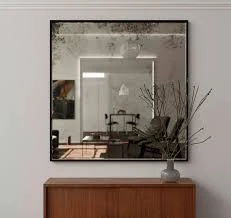

The Allure of Victorian Frosted Glass
Victorian frosted glass, an exquisite decorative element that epitomizes the artistry and craftsmanship of the Victorian era, has captured the hearts of many art enthusiasts and historians alike. This unique medium reflects not only the aesthetic values of the time but also the innovations in glass-making techniques that emerged during the 19th century. As we delve into the enchanting world of Victorian frosted glass, we come to appreciate its beauty, functionality, and the cultural context surrounding its use.
Historical Context
The Victorian era, which spanned from 1837 to 1901, was marked by industrial progress, exploration, and an increasing interest in aesthetics. This period saw the rise of various artistic movements, including the Gothic Revival, Arts and Crafts, and Aesthetic movements, all of which celebrated craftsmanship and decorative arts. The introduction of frosted glass during this time was a result of both technological advancements and a desire for decorative elements that could enhance interiors while providing necessary privacy.
Frosted glass, often achieved through sandblasting or acid etching, creates an opaque surface that diffuses light beautifully. This quality was particularly desirable in Victorian homes, where the intricate design of stained glass windows often clashed with the need for privacy. As such, frosted glass became a popular choice for doors, windows, and transoms, allowing natural light to filter in while concealing the interior from the outside world.
Design and Aesthetic Appeal
Victorian frosted glass is characterized by its ornate designs and intricate patterns. Common motifs included floral designs, geometric shapes, and natural scenes, all of which were representative of the Victorian fascination with nature and the craftsmanship of the time. The glass itself was often embellished with gilded edges or hand-painted details that reflected the artistic fervor of the era.
Moreover, Victorian frosted glass is not merely functional; it serves as a statement piece in any interior. Whether used in lighting fixtures, cabinet doors, or as decorative panels, frosted glass adds a touch of elegance and sophistication to spaces. The soft, diffused light it emits creates an inviting ambiance, often evoking a sense of nostalgia for a bygone era.

Frosted Glass in Victorian Interiors
In Victorian homes, frosted glass was typically used in conjunction with other decorative elements such as wallpaper, furniture, and textiles, creating a cohesive aesthetic. The use of frosted glass was also a reflection of the period's movement towards more open living spaces. While privacy remained a priority, the Victorian homeowner sought to create airy environments filled with light.
In lavish parlors, for example, large frosted glass windows would be adorned with delicate lace curtains, allowing natural light to illuminate rich fabrics and ornate furnishings. In dining rooms, frosted glass door panels added an extra layer of sophistication, complementing the fine china and crystal glassware.
Preservation and Modern Usage
Today, Victorian frosted glass is highly sought after by collectors and restoration enthusiasts. Original pieces can often be found in antique shops, and many homeowners take great care in preserving the beauty of this art form. Reproductions of Victorian frosted glass are also popular, providing a way for contemporary homes to incorporate the charm of the Victorian aesthetic.
Modern interior design has embraced the elegance of frosted glass, using it in minimalist and contemporary settings. Its versatility allows it to complement various design styles, from traditional to modern. Frosted glass is often incorporated into sliding doors, room dividers, and even furniture, providing privacy and elegance without compromising on light.
Conclusion
Victorian frosted glass stands as a testament to the intricate craftsmanship and artistic spirit of the Victorian era. Its delicate beauty, combined with functionality, makes it a timeless decorative element that continues to inspire and enchant. As we appreciate the intricacies of this art form, we also celebrate the cultural history it represents—an era of innovation, beauty, and a deep appreciation for the finer things in life. Whether in grand restorations or modern interpretations, Victorian frosted glass invites us to glimpse into the past while illuminating our present.